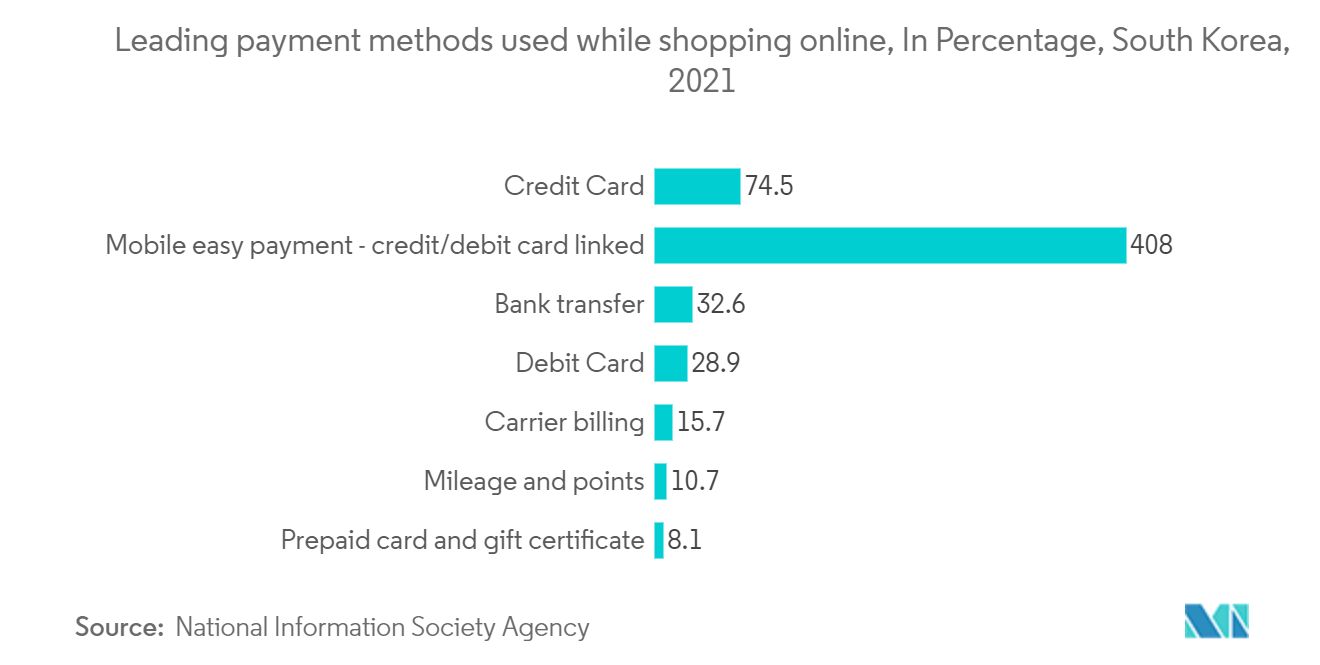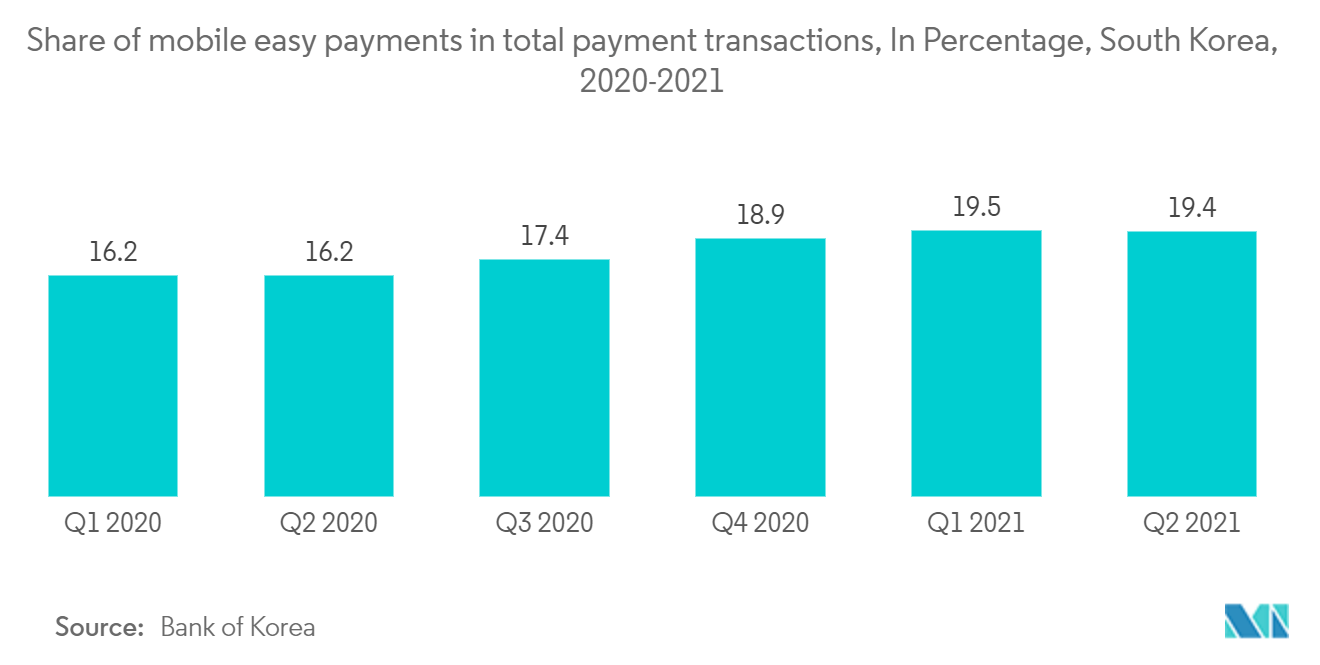Market Trends of South Korea Payments Industry
This section covers the major market trends shaping the South Korea Payments Market according to our research experts:
Retail Industry to Drive Market Growth
- The payment market in South Korea is developing with the changing customer behavior. Trends such as mobile payments, internet banking, instant payments, e-commerce, and the growing impact of regulatory agencies are affecting the payment market in the country.
- Th Covid-19 pandemic accelerated the growth of the e-commerce market in South Korea, and this led to the wide use of online payment sites and cashless payment options. The users found it suitable and easy to use payment methods during online shopping and transactions.
- The growth opportunity is attracting international companies to launch their business in South Korea, further driving the payment market. For instance, In January 2022, Apple joined Google by allowing third-party developers to offer their alternate payment services for purchases made through the App Store. The two companies are now in compliance with the South Korean Telecommunications Business Act, which refrained the companies due to app payment monopolies.
- Online retailing in South Korea for various needs like food and beverages, clothing, household items, and others have attracted the market players to expand their business through strategic acquisitions and partnerships. For instance, In May 2022, Carrot, a digital insurance platform in South Korea, announced a partnership with Naver Financial Corp. (Naver) in order to support the distribution of shopping return insurance for the merchants of Naver's online shopping platform, Smart Store.

Significant Growth in Payment is Expected due to Digital Transformation
- Digitalization is enhancing processes by leveraging digital technologies and digitalized data. It advances efficiency and productivity and reduces costs for a business. Many developed and developing countries, including South Korea, are adopting digitalization to boost their economy and promote contactless services.
- The government is taking initiatives in order to boost digitalization in the country because of the growing demand for the country to connect digitally to the world, resulting in a boost in the digital economy. For instance, In July 2021, the World Bank's Digital Development Global Practice launched The Korea Digital Development initiative (KoDi). The three-year initiative will help the low-and middle-income countries accelerate the digital transformation that is data-driven, secure, and green by sharing information on recent reform practices and providing country-specific technical assistance.
- The government has also partnered with IT companies to further advance and develop the digital infrastructure. For instance, in April 2021, Cisco announced its partnership with South Korea's government to accelerate digitalization initiatives. Cisco will invest in 5G, cloud computing, smart factories, and IT skill development through this partnership. The initiative is aligned with the country's digital new deal strategy and the government's Industry - 4.0 policy that will better prepare the economy and south Koreans for the tech-centric industrial revolution.
- Moreover, in January 2021 South Korea Government announced to spend 12.7 trillion won (USD 11.7 billion) as a part of its digital New Deal program with an aim to foster new technology industries. Furthermore, In 2020 the government introduced an ambitious stimulus project under the Korean New Deal initiative for an amount of 160 trillion won till 2025.

